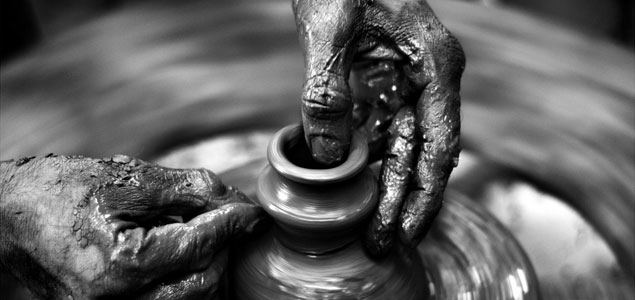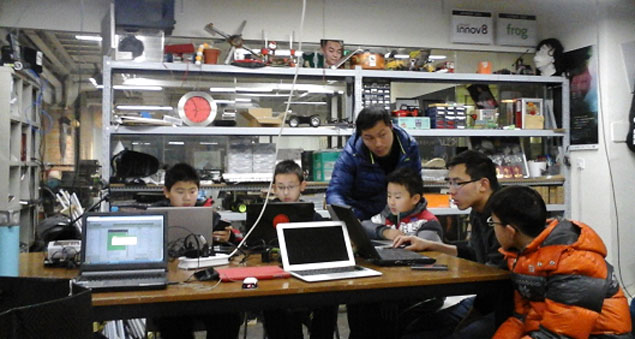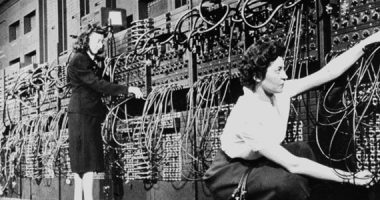
Create Something. Source: Flickr.
Given the emphasis on innovation in China’s maker culture, and the shift towards the market as a result of its encounter with Shanzhai culture, makerspaces are not just an opportunity to boost the country’s economy but also a means for modernising its educational system, which is rooted in tradition and geared towards the “gaokao” – university entrance exams– and thus encourages rote learning. The spirit of learning by doing and the free experimentation that characterise maker processes are keys to renewing the education system so that it becomes capable of educating a new production class of professionals who have the capacity to create and to take risks. This will lead to a leap from the idea of “made in China” –the country as a supplier of cheap labour for Western companies– to “created in China”.
Along these lines, in 2011, only a year after the creation of XinCheJian, Shanghai authorities decided to set up and finance 100 “innovation houses”, spaces in community centres set aside for teaching people to use post-digital tools. David Li, who is actively collaborating in the implementation of these centres, explains that “there are already 72 innovation houses being implemented in community centres around Shanghai. Minister Li Kequiang’s media-friendly policy in relation to makerspaces has attracted attention to the initiative, and will lead to significant growth in 2015.”
A more ambitious project is the construction of the largest makerspace in the world at China’s most prestigious engineering school, Tsinghua University in Beijing. The plan includes a 16,000 square metre building in which all students at the university will experiment with open hardware as part of their degree. Last year, Tsinghua also launched an annual Makers’ Day, an event that promotes the integration of maker culture within education thanks to the university’s reputation for excellence.
Government backing for the expansion of the maker movement has also led to a maker fair being organised in China. An initiative linked to Make Magazine, Maker Faires include workshops, exhibitions and demonstrations related to DIY making, and attract enthusiasts from around the world. The first of these events was organised in the United States in 2006 and they soon spread throughout the planet. China’s first Maker Faire was held in Beijing in 2012 with the support of the Communist Youth League, and later moved to Shenzhen, where the last edition attracted 30,000 visitors.
Another event with a greater media impact was the Chinese Prime Minister’s visit to Chaihuo Makerspace in Shenzhen in January this year, which put the spotlight on the important role of the movement in the country’s economic development. A few months earlier, in November 2014, the Mayor of Shenzhen Xu Qin had published the Declaration of Global Makers, which turned the city into a place that welcomes and promotes this new production culture.
Government involvement in the maker movement is not exclusive to China: the White House recently announced that it will organise its own Maker Faire, and that the Obama administration will support non-profit companies in order to boost the movement. On a more controversial level, the Defense Advanced Research Projects Agency (DARPA) is investing millions in projects that have emerged from the maker scene. This support is grounded in the idea of repositioning makers as an economic movement, a Silicon Valley-style revolution in which maker culture is seen as a new innovation process based on the implementation of technological products that contribute to economic progress. As such, it radically breaks away from the ideals that led to the founding of the first hackerspaces in Europe: the active criticism of the implications of the use of new technologies in society, ongoing experimentation free of economic interests with a view to the disruptive creation of new social processes, and citizen empowerment through collaborative learning of the material processes that shape our world, geared towards having an impact on the world and towards achieving independence from the consumer market. Maker culture does not just bring about new products, but also new forms of labour and production. Now that it has become a global phenomenon that includes China and its massive manufacturing infrastructure, this movement could lead to a new geopolitical distribution of production and economic forces.
And the same could be said within China, where the implementation of new technologies has traditionally been oriented towards economic progress and the control and surveillance of the population. One of the consequences of this has been the creation of a separate communications network that is isolated from the rest of the world and under strict government control, and where freedom of expression is only possible through subterfuge. This, in a country where civic events are looked upon with suspicion and impossible to carry out without state approval and support. And where the population is extremely proletarianised by an educational system based on the perpetuation of tradition and geared towards training specialised professionals to the detriment of critical and speculative thought. For these people who are busy with survival and working to achieve social advancement –which consists of accessing the consumer market– the maker movement can be an initial step towards opening up and citizen empowerment. XinCheJian is a place that welcomes people from all backgrounds: “Being in Shanghai has its advantages, given that everybody comes to Shanghai. XinCheJian receives many visitors, and we give a warm welcome to makers from around the world. Like the city of Shanghai itself, XinCheJian has been international from day one, and this has contributed greatly to its fun atmosphere”. Anybody who goes to this makerspace will find a big, international family, a relaxed space in which new ideas are always being shaped, beyond the constraints of necessity and conventional leisure options, and always with a hands-on attitude. When its founder is asked what has generated the atmosphere, he says: “The idea of keeping it open and fun.”

Introduction to Arduino workshop for children at XinCheJian. Photo courtesy of Sandra Álvaro and David Li.
However, a commitment to collective production should bring about a critical understanding of how these new technologies are implemented in society. Opening the black box of the devices that come to us as given and that make up our culture is a way of putting them back in context, revealing the social, economic and cultural processes that have given rise to them. It has been described as a way of “thinking with objects” by Garnet Hertz, one of the founders of Critical Making, a term that refers to a way of thinking about technology that is linked to the labs set up by Matt Ratto and to other concepts that come up when technology and engineering meet design and the humanities, such as critical engineering and disruptive, fictional design. In China, where new information and computing technologies have been implemented at a very fast pace, and unconnected to their historical development, it is difficult to trace the context of the new culture that is being generated. The country remains focused on advancing towards a new society based on innovation and economic progress, but there has not been a process of humanistic reflection on the theoretical and social effects of the implementation of these technologies. And this plunges the country into blind progress that does not know what kind of society is being created as a result.
* Interview with David Li in March 2015.




Leave a comment